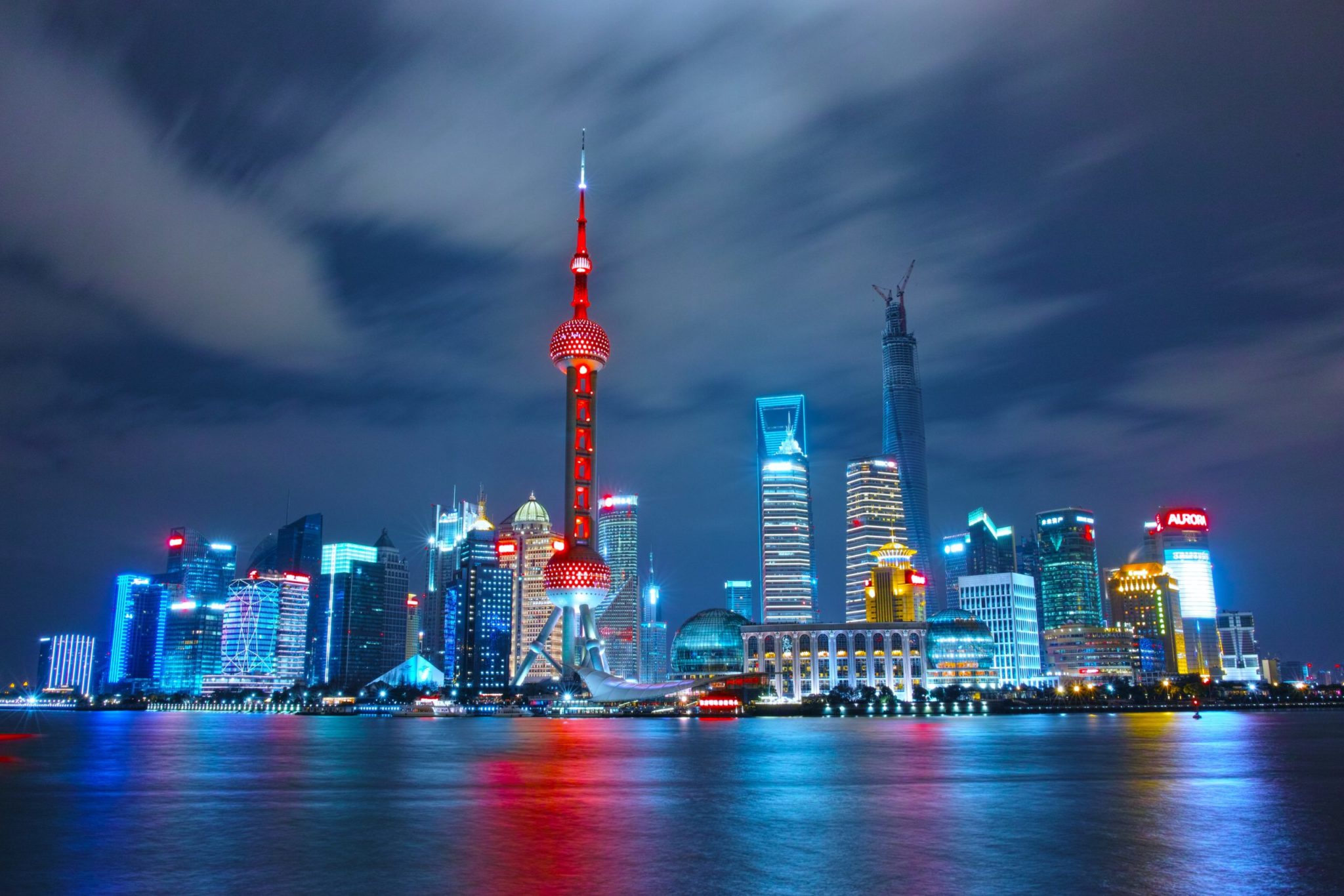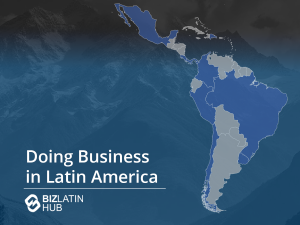Trade between China and Latin America offers significant opportunities for businesses looking to enter or expand in these markets. However, succeeding in this space requires more than strong business strategies. Companies must understand legal and HR compliance to avoid risks and ensure smooth operations.
What is China-Latin America trade?
China-Latin America trade refers to the economic exchange between China and the countries of Latin America, encompassing the export and import of goods and services. This trade relationship has grown significantly over the past few decades, making China one of the top trading partners for many Latin American countries. The trade dynamics between China and Latin America are primarily driven by China’s demand for raw materials, agricultural products, and energy resources, which are abundant in Latin American countries.
In return, Latin American markets import a wide range of Chinese manufactured goods, including electronics, machinery, and textiles. The importance of China-Latin America trade lies not only in the volume and diversity of goods exchanged but also in the deepening economic ties and investments that accompany this trade. China has become a major investor in Latin America, funding infrastructure projects, energy and mining developments, and agricultural activities.

This investment has further solidified the trade relationship, providing Latin America with essential capital for development while securing China’s access to key resources and markets. Understanding the China-Latin America trade is crucial for grasping the broader implications of China’s global economic strategy and its impact on regional development, economic policies, and geopolitical alignments in Latin America. The trade relationship exemplifies how China is expanding its influence in developing regions through economic partnerships, shaping the global trade network, and altering traditional trade blocs and alliances.
Why is legal and HR compliance crucial?
Legal and HR compliance is crucial in the China-Latin America trade context due to the complex regulatory environments of these regions. Compliance ensures businesses operate within the law, avoiding fines, penalties, and potential litigation that can arise from non-compliance. For companies engaging in cross-border trade, understanding and adhering to trade regulations, tariffs, and import/export restrictions is essential to facilitate smooth operations and prevent disruptions.
Similarly, HR compliance is vital due to the diverse labor laws and cultural nuances across Latin American countries. It involves adhering to local labor laws, including minimum wage requirements, working hours, and overtime regulations. Effective HR compliance helps businesses navigate cultural differences, manage expatriate staff effectively, and ensure fair treatment of all employees, thereby mitigating legal risks and enhancing the company’s reputation.
Key legal compliance issues
Navigating the China-Latin America trade landscape requires a keen understanding of key legal compliance issues that can impact business operations. These issues encompass a range of regulations and laws, including trade regulations and tariffs, which dictate the terms of trade and taxation of goods; import/export restrictions, that control the flow of specific items across borders; and tariff classifications, essential for determining how products are taxed. Furthermore, protecting intellectual property through patent registration and trademark protection is critical in safeguarding innovations and brand identity in foreign markets.
Contract enforcement and dispute resolution mechanisms provide the legal backbone for resolving business conflicts, while jurisdictional challenges highlight the complexities of operating under different legal systems. Addressing these legal compliance issues is paramount for businesses to avoid legal pitfalls, ensure smooth operations, and maintain a competitive edge in the China-Latin America trade corridor.
| Compliance Issue | Description | Example/Case Study |
|---|---|---|
| Trade Regulations and Tariffs | Dictate the terms of trade and taxation of goods. | In 2020, China adjusted tariffs on a range of products from Latin America to promote bilateral trade. |
| Import/Export Restrictions | Control the flow of specific items across borders to protect local industries and safety. | Brazil imposes restrictions on the export of raw leather to protect its domestic industries. |
| Tariff Classifications | Essential for determining how products are taxed based on their categorization. | Incorrect classification of goods can lead to significant fines. For example, a company misclassifying electronic goods as mechanical parts faced hefty penalties. |
| Intellectual Property Rights | Protect creators’ rights and innovations, crucial for business competitiveness. | A U.S. company won a lawsuit in China for patent infringement, highlighting the importance of patent registration. |
| Patent Registration | Grants inventors exclusive rights to their inventions, providing legal protection. | A Latin American food processing company successfully registered a patent in China, preventing competitors from copying their technology. |
| Trademark Protection | Secures the use of logos, names, and symbols, essential for brand identity. | A Chinese beverage company faced trademark infringement in Mexico and won the case, securing its brand identity. |
| Contract Enforcement | Ensures that agreements between parties are legally binding and can be upheld in court. | A dispute over a trade contract between a Chinese manufacturer and a Latin American distributor was resolved through arbitration, emphasizing the importance of clear contract terms. |
| Dispute Resolution Mechanisms | Offer structured processes to resolve conflicts, including arbitration and litigation. | An international arbitration case settled a dispute between a Chinese investor and a Latin American energy company, showcasing effective dispute resolution. |
| Jurisdictional Challenges | Arise from differences in legal systems and regulations across countries. | A Chinese tech company navigated jurisdictional challenges by working with local legal experts in Argentina to comply with local data protection laws. |
Addressing these compliance issues through detailed understanding and strategic planning is crucial for businesses to thrive in the dynamic China-Latin America trade environment.
Main HR compliance challenges
Navigating HR compliance in the China-Latin America trade environment presents several challenges, primarily due to the diverse and complex labor laws across these regions. Understanding local labor laws is paramount, as they dictate minimum wage requirements, working hours, and overtime policies, which can vary significantly from country to country. Moreover, navigating cultural differences plays a crucial role in effective communication and business etiquette, impacting management practices and employee relations.
Additionally, managing expatriate staff involves intricate processes related to work permit and visa processes, as well as understanding the taxation implications for foreign employees. These challenges require diligent attention and strategic planning to ensure legal compliance and smooth business operations.
| Challenge | Description | Specific Examples |
|---|---|---|
| Understanding local labor laws | Critical for ensuring compliance with country-specific regulations regarding employment, benefits, and workplace safety. | Brazil’s complex labor code vs. China’s employment contract law. |
| Minimum wage requirements | Vary significantly across regions, directly affecting payroll strategies. | Minimum wage in Mexico vs. minimum wage in China. |
| Working hours and overtime | Regulations dictate compensation for standard and extra working hours. | Chile’s 45-hour workweek vs. China’s standard 40-hour workweek. |
| Navigating cultural differences | Essential for effective communication and management within diverse teams. | Hierarchical vs. egalitarian business cultures in Latin America and China. |
| Communication styles | Influence how messages are conveyed and received across cultures. | Indirect communication in China vs. direct communication in some Latin American countries. |
| Business etiquette | Varies widely, essential for building successful business relationships. | Formal greeting styles in China vs. more informal approaches in Latin America. |
| Managing expatriate staff | Involves legal and practical aspects of employment, including relocation and integration. | Visa requirements for Chinese expatriates in Brazil vs. local employment laws. |
| Work permit and visa processes | Crucial for legally employing foreign nationals. | Differences in work permit approval times and requirements across Latin American countries. |
| Taxation implications | For employees and businesses must be understood to navigate tax laws. | Double taxation agreements between China and Latin American countries, or lack thereof. |
Addressing legal compliance
Addressing legal compliance in the China-Latin America trade requires a multifaceted approach. Conducting thorough due diligence is the first step, ensuring that businesses understand the legal landscape and the specific regulations that apply to their operations. Market entry strategies must be developed with legal compliance in mind, including partner and investment vetting to mitigate risks.
Engaging with local legal experts and consulting with law firms specializing in international trade is crucial for staying abreast of regulatory updates and ensuring that compliance policies are up to date. Regular reviewing of compliance policies and conducting annual legal audits are essential practices that help businesses adapt to legal changes. Establishing policy update protocols ensures that businesses can quickly respond to new legal requirements, maintaining compliance and safeguarding their operations.
| Strategy | Description | Examples |
|---|---|---|
| Conducting thorough due diligence | Ensures businesses understand all legal obligations and assess potential risks in new markets. | Investigating local laws and regulations, assessing potential partners’ compliance history. |
| Market entry strategies | Should be designed with compliance at their core, tailored to navigate the legal complexities of China-Latin America trade. | Choosing entry modes that comply with local laws, such as joint ventures or partnerships with local firms. |
| Partner and investment vetting | Crucial for identifying reliable and compliant local collaborators, minimizing legal and financial risks. | Conducting background checks, reviewing potential partners’ legal compliance records. |
| Engaging with local legal experts | Provides insights into the regional legal landscape, offering guidance on navigating local regulations effectively. | Hiring law firms with expertise in Chinese and Latin American trade laws for ongoing consultation. |
| Law firms specializing in international trade | Offer expertise in cross-border regulations, helping businesses ensure compliance across jurisdictions. | Collaborating with firms that have a strong track record in resolving international trade disputes. |
| Consultants for regulatory updates | Keep businesses informed of changing laws and regulations, enabling timely adjustments to compliance strategies. | Subscribing to services that provide updates on legal changes in China and Latin America. |
| Reviewing compliance policies | Regularly ensures that business practices remain aligned with current legal requirements and industry standards. | Annual reviews of internal compliance policies against current legal frameworks. |
| Annual legal audits | Offer a comprehensive review of a company’s adherence to legal obligations, identifying areas for improvement. | Engaging independent auditors to assess compliance with trade, labor, and environmental laws. |
| Policy update protocols | Establish a systematic approach to updating compliance measures in response to new laws and regulations, ensuring ongoing compliance. | Implementing a process for rapid policy revision and dissemination within the organization following legal changes. |
Strategies for HR compliance
Effective HR compliance strategies in the China-Latin America trade context encompass a comprehensive approach to managing workforce requirements and cultural nuances. Developing HR policies that are aligned with local labor laws ensures legal operations across different jurisdictions. Recruitment and selection processes must be designed to meet diverse and inclusive workplace standards, while termination and severance practices need careful consideration to comply with local regulations.
Training on employment laws is essential for both management and staff to understand their rights and obligations. Implementing anti-discrimination policies and health and safety regulations not only complies with legal requirements but also promotes a positive workplace culture. An expatriate management program is vital for addressing the specific needs of foreign staff, including cultural assimilation support and legal and logistical relocation assistance, ensuring a smooth transition and integration into the local workforce.
These strategies collectively contribute to mitigating legal risks, enhancing business reputation, and fostering a supportive and compliant work environment.
| Strategy | Description | Example |
|---|---|---|
| Developing HR policies | Tailor policies to comply with local labor laws, covering aspects like discrimination, harassment, and leave entitlements. | A multinational company operating in Brazil and Mexico updates its HR manual to include specific sections on local labor laws, including severance pay and holiday entitlements, after consulting with local legal experts. |
| Recruitment and selection | Ensure processes are inclusive and comply with local employment laws. | Implementing a standardized recruitment process that includes bias training for interviewers and job postings that encourage diversity in Argentina. |
| Termination and severance | Navigate local laws to manage terminations and severance ethically and legally. | Developing a checklist for lawful termination in Colombia that includes mandatory severance calculation and notice periods. |
| Training on employment laws | Educate employees and management on local employment laws to prevent violations. | An annual workshop for managers in Chile on changes to labor laws and their implications for overtime and employee rights. |
| Anti-discrimination policies | Create a workplace that promotes diversity and prevents discrimination. | Launching a campaign across operations in Peru to raise awareness about the company’s zero-tolerance policy towards discrimination and harassment. |
| Health and safety regulations | Adhere to local regulations to ensure a safe working environment. | Conducting monthly safety drills and audits in a manufacturing plant in China to comply with stringent safety regulations. |
| Expatriate management program | Support foreign staff with legal, cultural, and logistical assistance. | A comprehensive orientation program for expatriates moving to Mexico, including Spanish language courses, legal documentation assistance, and cultural integration activities. |
| Cultural assimilation support | Facilitate the integration of employees into new cultural environments. | Partnering with local cultural organizations in Brazil to provide workshops on Brazilian business etiquette and social norms for newly arrived expatriate staff. |
| Legal and logistical relocation assistance | Offer support for the legal and logistical aspects of relocating employees. | Providing a “relocation package” for employees transferring to Argentina, including visa processing, housing search assistance, and school enrollment support for their children. |
By implementing these strategies with real-world examples and detailed actions, businesses can effectively navigate HR compliance challenges in the China-Latin America trade context, ensuring a smooth and compliant operation that respects local laws and cultural nuances.
Benefits of compliance
Compliance with legal and HR regulations in the China-Latin America trade context offers significant benefits for businesses. It mitigates legal risks, reducing the likelihood of fines, penalties, and litigation. This proactive approach to compliance also avoids financial losses associated with non-compliance issues.
Furthermore, it enhances business reputation, building trust with partners, investors, and the public. Compliance facilitates smoother operations by ensuring that business practices align with local laws and regulations, leading to streamlined administrative processes. Moreover, it contributes to improving workforce efficiency by creating a stable and fair working environment, ultimately attracting and retaining talent.
Overall, compliance is not just a legal requirement but a strategic asset that supports sustainable business growth and market expansion.
| Benefit | Description | Examples |
|---|---|---|
| Mitigating legal risks | Taking proactive measures to ensure compliance with laws and regulations, reducing the potential for legal issues. | A company implementing rigorous compliance training reduces the risk of trade violations. |
| Avoiding fines and penalties | Adherence to legal standards protects businesses from costly financial repercussions. | A business regularly reviewing its HR policies to align with local labor laws avoids penalties for non-compliance. |
| Preventing litigation | Compliance minimizes the likelihood of legal disputes, saving time, resources, and protecting the company’s image. | By ensuring proper contract enforcement, a company avoids costly and reputation-damaging litigation. |
| Enhancing business reputation | Demonstrating a commitment to legal and ethical standards appeals to customers, partners, and stakeholders. | A company known for its strict adherence to environmental regulations gains positive recognition in the market. |
| Building trust with partners | Reliance on a foundation of compliance and transparency is essential for fostering strong business relationships. | Transparent supply chain practices lead to stronger partnerships with local suppliers. |
| Attracting investment | Compliance signifies reliability and long-term viability to investors, making the business an attractive investment. | Investors are more likely to fund a company with a clear record of compliance and ethical business practices. |
| Facilitating smoother operations | Ensuring that business activities are not hindered by legal complications leads to smoother operations. | Streamlined import/export processes, thanks to compliance with trade regulations, ensure timely delivery of goods. |
| Streamlining administrative processes | Compliance reduces bureaucracy and increases efficiency in business operations. | Automated compliance checks in HR processes reduce the administrative burden and improve accuracy. |
| Improving workforce efficiency | A compliant and ethical work environment, where employees feel secure and valued, leads to higher productivity. | Implementing fair labor practices and ensuring workplace safety result in a more motivated and efficient workforce. |
How Biz Latin Hub can help you reap the China-Latam trade market
Biz Latin Hub provides services to support businesses entering and expanding in the China-Latin America trade corridor. Their offerings include legal and accounting services that ensure compliance with local regulations, along with recruitment and HR solutions to help businesses build skilled, compliant teams. They also craft market entry strategies that address both cultural and regulatory considerations.
Working with local legal experts and a strong network, Biz Latin Hub helps businesses navigate challenges and reduce compliance risks. Their integrated support allows companies to focus on growth while confidently capitalizing on opportunities in the China-Latin America trade market. Click here to get started.





